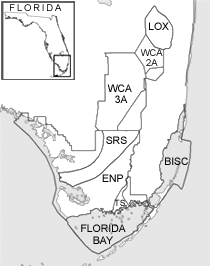References:
Krammer K. & Lange-Bertalot H. (1991): "Susswaserflora von Mitteleuropa", Vol.2/3, Fig.132:1-5,29, Fig.131:5;
Description:
Valves are oval, elliptical, cruciform or rarely triangular, with widely spaced uniseriate rows of areolae extending from the valve face onto the curving mantle; areolae circular or elliptical, sometimes transapically extended, opening externally into slight grooves in valve face; vela present; sternum variable but never very narrow; no rimoportulae; spathulate or dichotomously branched marginal spines conspicuous, single or in pairs between areolae; small plaques sometimes occur along valve margin; apical pore fields variable, containing a few isolated, often slightly rimmed pores to several rows of them; internally with no distinguishing features; 6-8 or more copulae per valve, usually extremely curved and almost certainly incomplete (open) bands and without areolae; Patrick & Reimer (1966) describe the striae as being radiate throughout most of the valve, and are crossed by fine lines; length is 7-25µm, breadth is 5-12µm; striae count is 14-18 in 10µm
